DEI & Leadership Blog
Prioritizing Self-Care in the Workplace: Why It Matters and How to Make It Happen
As summer winds down and a new season begins, it’s the perfect moment to pause, reflect, and reprioritize. The shift from the unstructured, sun-filled days of summer to the steadier pace of fall offers a natural opportunity to reset—not just our calendars, but our commitment to well-being. Just as organizations plan for the months ahead, leaders and teams can use this seasonal change to check in with themselves and make self-care a priority again.


In today’s fast-paced work environment, burnout isn’t just a buzzword—it’s a genuine concern for many organizations. Whether you’re running a nonprofit or a corporate enterprise, the well-being of your team directly impacts productivity, morale, and overall success. Encouraging self-care isn’t just a nice-to-have perk; it’s a strategic investment in your organization’s future.
Today’s national culture is marked by constant connectivity, rapid technological advancements, and increasing demands both professionally and personally. The boundaries between work and home life have blurred, making it more challenging for individuals to disconnect and recharge. Add economic uncertainties and global events, and stress levels in the workforce are higher than ever.
Now, more than ever, companies must prioritize self-care to foster resilience, retain top talent, and create an environment where employees feel supported and empowered to thrive.
Why Supporting Self-Care Benefits Your Organization
- Increased Productivity Year-Round: When employees are mentally and physically well, they can focus better, think creatively, and perform tasks more efficiently—whether it’s the energy of spring or the slower pace of winter. Burnt-out staff, on the other hand, are more prone to errors and decreased output.
- Reduced Turnover and Absenteeism in Every Season: Organizations that prioritize self-care create a supportive environment where employees feel valued. This leads to higher job satisfaction, lower turnover rates, and fewer sick days—helping teams weather even the busiest seasons.
- Enhanced Workplace Culture that Grows Over Time: Promoting self-care fosters a culture of respect, trust, and empathy. A positive workplace culture attracts top talent and keeps existing staff engaged, no matter the season.
- Improved Mental Health During High-Stress Periods: Stress and burnout can lead to mental health challenges, which affect not only the individual but the entire team. Supporting self-care helps mitigate these risks during peak workloads and seasonal transitions.
- Boosted Creativity and Innovation with Every Fresh Start: When employees have time to recharge, they return with fresh perspectives—much like the renewal that comes with a new season—fueling growth and problem-solving.
Practical Ways to Promote Self-Care in the Workplace
- Flexible Work Schedules: Offer flexible hours or remote work options to help employees balance professional and personal lives—especially during times of seasonal change.
- Encourage Regular Breaks: Implement “no meeting” times or the 45-minute meeting model to allow for reset moments, just as nature pauses between seasons.
- Mental Health Resources: Provide counseling, stress management workshops, or EAPs so support is available all year long.
- Wellness Programs: Offer yoga, meditation, nutrition workshops, or fitness challenges that can be adapted to seasonal needs.
- Lead by Example: Leaders who take breaks, set boundaries, and prioritize their own wellness send a strong message—especially when they model how to slow down during busier seasons.
- Professional Development on Self-Care: Host workshops on resilience, mindfulness, and stress management to help employees build skills for every stage of the year.
- Supportive Culture: Make open communication a priority, so employees feel comfortable asking for help—whether in the heat of summer or during end-of-year deadlines.
- Recognize and Reward: Acknowledge staff contributions often, aligning recognition moments with seasonal milestones to keep morale high.
- Encourage PTO Use: Reinforce that taking time off is a strength, not a weakness, and that seasonal breaks are essential for sustained performance.


Real-Life Example: Together for Youth’s Commitment to Self-Care
Together for Youth (TFY), a nonprofit child welfare organization, models how self-care can be deeply embedded into organizational culture:
- Flexible Work Options & PTO: Generous schedules and time off help staff maintain balance, no matter the season.
- EAP Access: Confidential mental health resources and stress management tools are available year-round.
- Wellness Initiatives: Meditation app subscriptions, seasonal company events, and physical activity opportunities keep wellness relevant through each part of the year.
- Staff Recognition: Staff are acknowledged in meetings, supervision, and through Stronger Together awards—aligned with organizational values.
- Trauma-Informed Sanctuary Model: A focus on creating safe, supportive, and healing environments—for staff as well as clients—through all of life’s seasons.
Our President & CEO, Brian Parchesky, puts it simply:
“Self-care isn’t a luxury, it’s a necessity. I believe in building ‘pause’ moments into our days, whether it’s a quick stretch, five minutes of meditation, or simply reflecting on your self-care goals for the day. When we prioritize our own well-being, we’re better equipped to serve others with energy, empathy, and purpose.”
The Bottom Line
Investing in self-care isn’t just about employee happiness—it’s about creating a resilient, innovative, and productive organization. When staff feel supported and valued, they’re more likely to stay engaged, contribute creatively, and remain loyal.
As we step into a new season, there’s no better time to reset priorities and make well-being a foundational part of your workplace culture. By embedding self-care into your organization’s daily rhythm, you’re not only helping your team thrive—you’re setting your organization up for long-term success.
